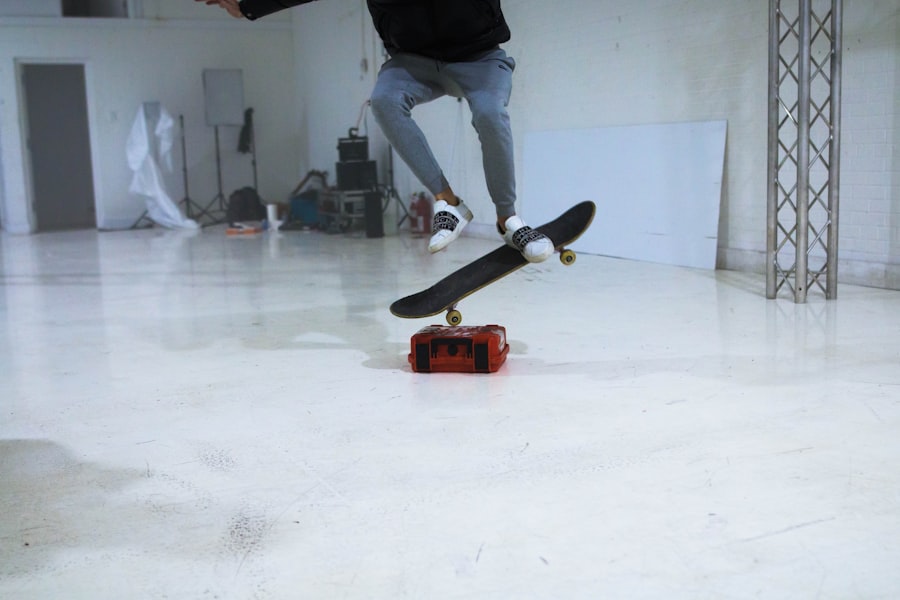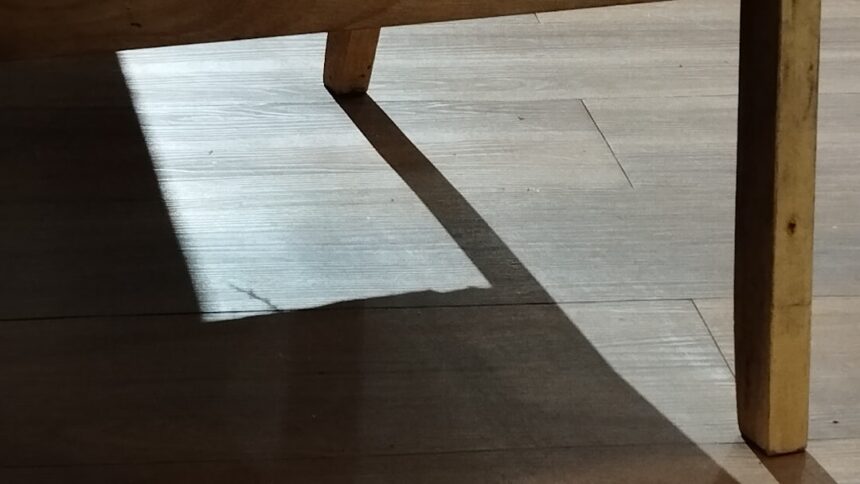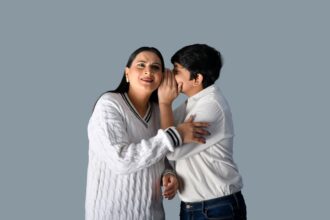Grounding techniques are essential tools that help you anchor yourself in the present moment, especially during times of anxiety or distress. These methods are designed to bring your awareness back to the here and now, allowing you to detach from overwhelming thoughts and feelings. By focusing on your immediate environment and bodily sensations, you can create a sense of safety and stability.
Grounding techniques can be particularly beneficial when you feel overwhelmed by anxiety, as they provide a way to regain control over your thoughts and emotions. When you practice grounding, you engage your senses and physical body, which can help you feel more connected to reality. This connection is crucial because anxiety often pulls you into a spiral of negative thoughts and worries about the future.
By employing grounding techniques, you can interrupt this cycle and redirect your focus. Whether through breathing exercises, mindfulness practices, or physical movements, grounding techniques serve as a bridge back to a calmer state of mind.
Key Takeaways
- Grounding techniques can help individuals manage anxiety by bringing their focus back to the present moment and their physical surroundings.
- Somatic symptoms, such as muscle tension and stomach discomfort, are closely linked to anxiety and can be alleviated through somatic solutions.
- Somatic solutions, such as body scan meditation and progressive muscle relaxation, can help reduce anxiety by promoting relaxation and body awareness.
- Breathing techniques, such as deep belly breathing, can be used as a grounding technique to calm the nervous system and reduce anxiety.
- Visualization, movement, engaging the senses, and creating a grounding toolkit are all effective strategies for managing anxiety and somatic symptoms, but seeking professional help is also important for long-term relief.
The Connection Between Anxiety and Somatic Symptoms
Anxiety is not just a mental experience; it often manifests physically in the form of somatic symptoms. You may find yourself experiencing tension in your muscles, rapid heartbeat, or even gastrointestinal discomfort when anxiety strikes. These physical sensations can be alarming and may further exacerbate your feelings of anxiety, creating a vicious cycle that is difficult to break.
Understanding this connection is vital for managing anxiety effectively. When you experience anxiety, your body goes into a heightened state of alertness, often referred to as the “fight or flight” response. This physiological reaction can lead to various somatic symptoms that may distract you from the underlying emotional issues.
Recognizing that these physical sensations are a natural response to anxiety can help you approach them with compassion rather than fear. By addressing both the mental and physical aspects of anxiety, you can develop a more holistic approach to managing your symptoms.
How Somatic Solutions Can Help Alleviate Anxiety

Somatic solutions focus on the mind-body connection, recognizing that emotional experiences are often stored in the body. By engaging in practices that address both your mental and physical states, you can alleviate anxiety more effectively. These solutions may include techniques such as mindfulness, body awareness, and movement therapies that encourage you to reconnect with your body and release pent-up tension.
Incorporating somatic solutions into your daily routine can lead to significant improvements in your overall well-being. For instance, practices like yoga or tai chi not only promote physical health but also foster a sense of inner peace and balance. By tuning into your body and its sensations, you can learn to identify areas of tension or discomfort that may be linked to anxiety.
This awareness allows you to address these issues proactively, leading to a more grounded and centered state of being.
Breathing Techniques for Grounding
| Technique | Description | Benefits |
|---|---|---|
| Deep Breathing | Inhale deeply through the nose, hold for a few seconds, exhale slowly through the mouth. | Reduces stress, calms the mind, increases oxygen flow. |
| 4-7-8 Breathing | Inhale for 4 seconds, hold for 7 seconds, exhale for 8 seconds. | Promotes relaxation, reduces anxiety, improves sleep. |
| Box Breathing | Inhale for 4 seconds, hold for 4 seconds, exhale for 4 seconds, hold for 4 seconds. | Enhances focus, reduces stress, regulates breathing. |
Breathing techniques are among the simplest yet most effective grounding methods available to you. When anxiety strikes, your breath often becomes shallow and rapid, which can exacerbate feelings of panic. By consciously focusing on your breath, you can create a calming effect that helps ground you in the present moment.
One popular technique is the 4-7-8 breathing method, where you inhale for four counts, hold for seven counts, and exhale for eight counts. This practice not only slows down your heart rate but also encourages relaxation throughout your body. Another effective breathing technique is diaphragmatic breathing, which involves breathing deeply into your abdomen rather than your chest.
This method activates the body’s relaxation response and helps reduce feelings of anxiety. As you practice these techniques regularly, you’ll likely find that they become more intuitive, allowing you to access a state of calmness even in stressful situations. By incorporating breathing exercises into your daily routine, you can create a powerful tool for grounding yourself whenever anxiety arises.
Body Scan Meditation for Grounding
Body scan meditation is a powerful practice that encourages you to develop awareness of your physical sensations while promoting relaxation. During this meditation, you systematically focus on different parts of your body, starting from your toes and moving up to the crown of your head. As you bring attention to each area, you may notice areas of tension or discomfort that have been overlooked in your daily life.
This practice not only helps ground you but also fosters a deeper connection with your body. As you engage in body scan meditation, allow yourself to observe any sensations without judgment. This non-reactive awareness can help you cultivate a sense of acceptance towards your physical experiences, reducing the power they hold over your emotional state.
Over time, regular practice can lead to increased body awareness and a greater ability to manage anxiety when it arises. By integrating body scan meditation into your routine, you’ll find it easier to stay grounded amidst life’s challenges.
Progressive Muscle Relaxation for Grounding

Progressive muscle relaxation (PMR) is another effective technique for grounding yourself during moments of anxiety. This method involves systematically tensing and then relaxing different muscle groups throughout your body. By doing so, you not only release physical tension but also cultivate a heightened awareness of how stress manifests in your body.
As you progress through each muscle group—from your feet to your head—you’ll likely notice how much tension you’ve been holding onto unconsciously. The beauty of PMR lies in its simplicity; it can be practiced anywhere and at any time. As you become more familiar with this technique, you’ll find it easier to recognize when you’re holding tension in specific areas and take steps to release it proactively.
This practice not only helps ground you but also promotes overall relaxation and well-being. By incorporating progressive muscle relaxation into your self-care routine, you’ll equip yourself with a valuable tool for managing anxiety effectively.
Using Visualization and Imagery for Grounding
Visualization and imagery techniques can serve as powerful grounding tools when you’re feeling anxious or overwhelmed. By creating mental images that evoke feelings of calmness and safety, you can transport yourself away from distressing thoughts and emotions. For instance, imagine yourself in a serene natural setting—a peaceful beach or a tranquil forest—where you feel completely at ease.
As you practice visualization regularly, you’ll likely find that these mental images become more vivid and accessible during moments of anxiety. This technique allows you to create a mental sanctuary where you can retreat whenever needed.
By harnessing the power of your imagination, you can cultivate a sense of grounding that helps counteract feelings of unease or panic.
Incorporating Movement and Exercise for Grounding
Movement and exercise are excellent ways to ground yourself while also promoting physical health. Engaging in activities such as walking, dancing, or yoga allows you to connect with your body in a meaningful way. When you’re feeling anxious, moving your body can help release built-up tension and energy that may be contributing to your distress.
The rhythmic nature of movement can also serve as a form of meditation, allowing you to focus on the present moment rather than spiraling into anxious thoughts. Incorporating regular exercise into your routine not only benefits your physical health but also enhances your mental well-being. Activities like running or swimming can elevate endorphin levels, leading to improved mood and reduced anxiety symptoms.
By finding movement practices that resonate with you—whether it’s a brisk walk in nature or an invigorating dance class—you’ll create opportunities for grounding that support both your body and mind.
Engaging the Senses for Grounding
Engaging your senses is an effective way to ground yourself during moments of anxiety or stress. By focusing on what you can see, hear, smell, taste, and touch in your immediate environment, you redirect your attention away from anxious thoughts and back to the present moment. For example, take a moment to observe the colors around you or listen closely to the sounds in your environment—perhaps the rustling of leaves or the hum of distant traffic.
You might also consider incorporating sensory experiences into your daily routine as grounding practices. Sipping a warm cup of tea while savoring its flavor or taking a moment to feel the texture of an object can help anchor you in the present moment. By intentionally engaging your senses throughout the day, you’ll cultivate a greater sense of awareness and presence that can serve as an antidote to anxiety.
Creating a Grounding Toolkit for Managing Anxiety
Creating a grounding toolkit tailored to your needs can empower you to manage anxiety more effectively. This toolkit may include various techniques you’ve learned—such as breathing exercises, visualization practices, or sensory engagement strategies—that resonate with you personally. Having these tools readily available allows you to respond proactively when anxiety arises rather than feeling overwhelmed by it.
Consider including items that evoke comfort or calmness in your toolkit as well—such as stress balls, essential oils, or calming music playlists. You might also want to jot down affirmations or reminders that inspire confidence and resilience during challenging moments. By curating a personalized grounding toolkit, you’ll equip yourself with resources that promote emotional well-being and help navigate life’s ups and downs with greater ease.
Seeking Professional Help for Somatic Solutions
While self-help techniques can be incredibly beneficial for managing anxiety through grounding practices, there may be times when seeking professional help is necessary. A therapist trained in somatic approaches can provide valuable guidance tailored specifically to your needs. They can help you explore deeper emotional issues related to anxiety while teaching additional techniques for grounding and self-regulation.
Engaging with a professional allows for personalized support as you navigate the complexities of anxiety and its somatic manifestations. They can introduce you to various therapeutic modalities—such as somatic experiencing or trauma-informed therapy—that focus on healing through the mind-body connection. Remember that seeking help is not a sign of weakness; rather, it demonstrates strength and commitment to prioritizing your mental health and well-being.
In conclusion, grounding techniques offer powerful tools for managing anxiety by fostering a deeper connection between mind and body. By understanding the relationship between anxiety and somatic symptoms, exploring various grounding methods such as breathing exercises and movement practices, and creating a personalized toolkit for self-care, you’ll be better equipped to navigate life’s challenges with resilience and grace. Remember that seeking professional support is always an option if needed; prioritizing your mental health is essential for living a fulfilling life.
Somatic grounding techniques are increasingly recognized as effective tools for managing anxiety, as they help individuals reconnect with their bodies and the present moment. These techniques often involve exercises that focus on physical sensations, such as deep breathing, progressive muscle relaxation, or mindful movement, to help reduce anxiety symptoms. For those interested in exploring more about these methods, an insightful article can be found on the Unplugged Psych website. This article delves into various somatic practices and their benefits for mental health. You can read more about it by visiting Unplugged Psych.
🧠 Your Trauma Is Rewiring Your Brain: Here’s How to Undo It | A Neuroplasticity & Somatic Guide
FAQs
What are somatic grounding techniques?
Somatic grounding techniques are practices that help individuals connect with their physical body in the present moment. These techniques can help reduce anxiety and promote a sense of calm by focusing on bodily sensations and movements.
How do somatic grounding techniques help with anxiety?
Somatic grounding techniques can help with anxiety by shifting the focus from racing thoughts to physical sensations. By bringing attention to the body, individuals can regulate their nervous system, reduce stress, and feel more grounded and present.
What are some examples of somatic grounding techniques?
Examples of somatic grounding techniques include deep breathing exercises, progressive muscle relaxation, body scanning, yoga, tai chi, and other mindful movement practices. These techniques can help individuals become more aware of their body and its sensations.
Are somatic grounding techniques effective for managing anxiety?
Many individuals find somatic grounding techniques to be effective for managing anxiety. These techniques can be used as part of a comprehensive approach to anxiety management, alongside therapy, medication, and other self-care practices.
Are somatic grounding techniques suitable for everyone?
Somatic grounding techniques can be beneficial for many individuals, but it’s important to consider individual preferences and needs. Some people may find certain techniques more helpful than others, and it’s important to find what works best for each person. It’s also important to consult with a healthcare professional if you have any underlying health conditions.




